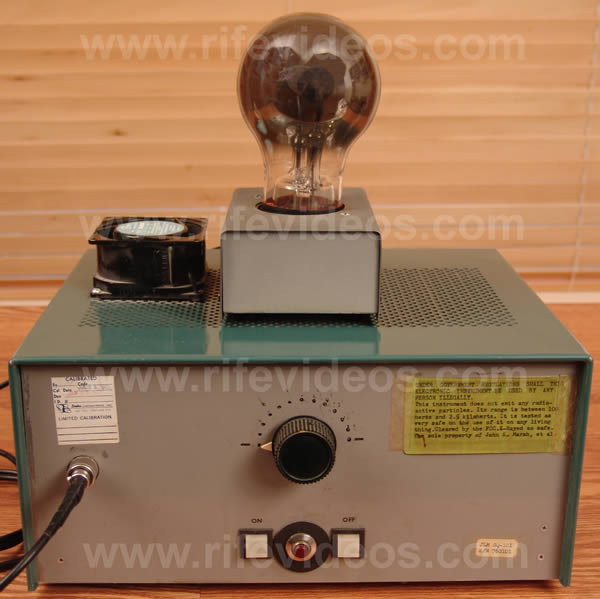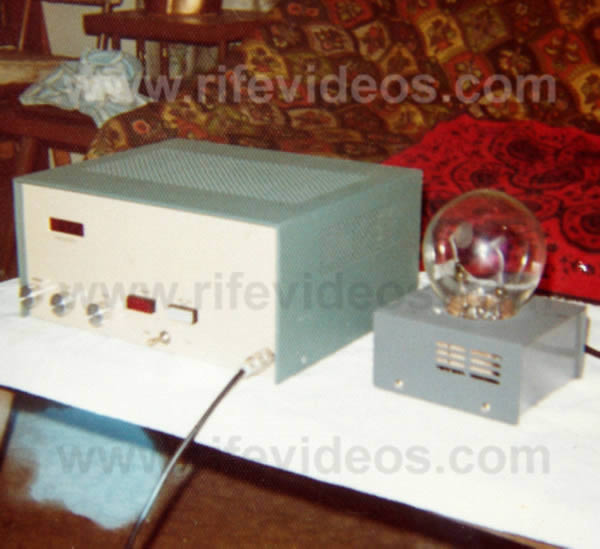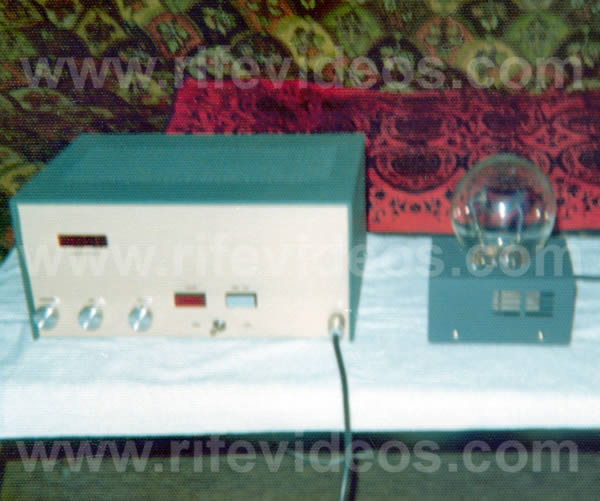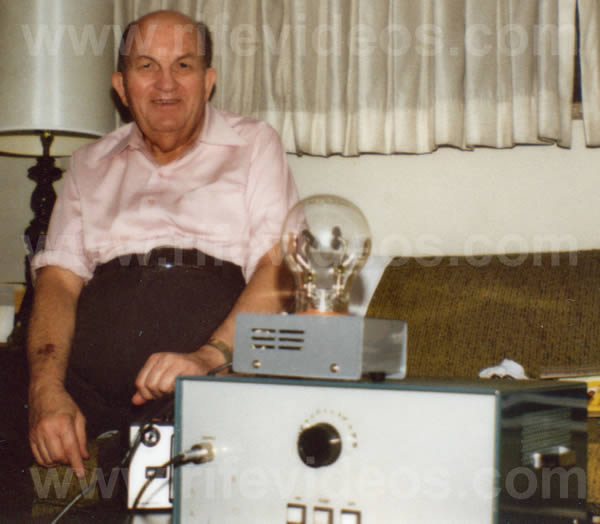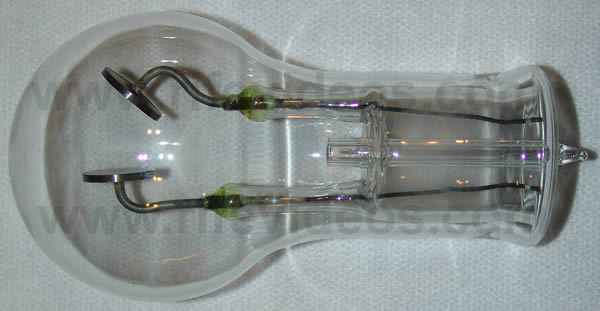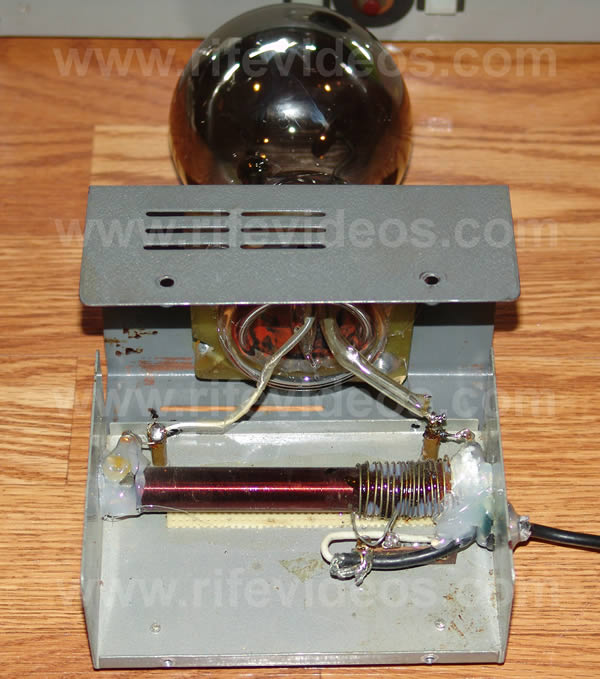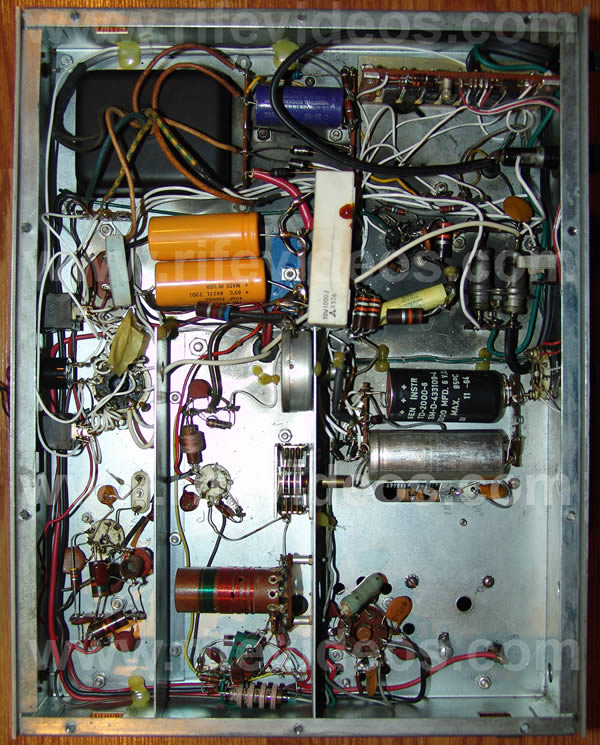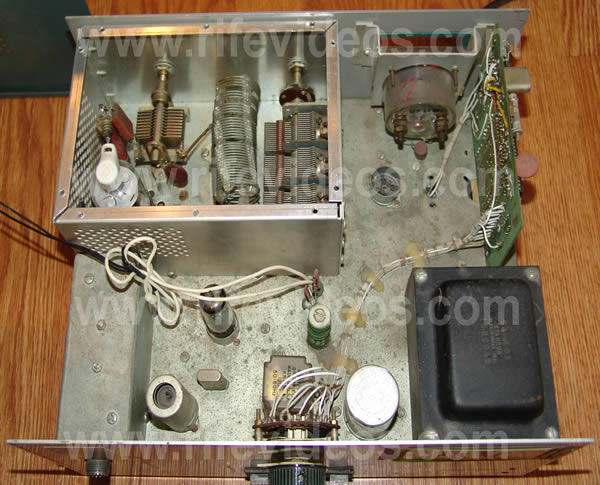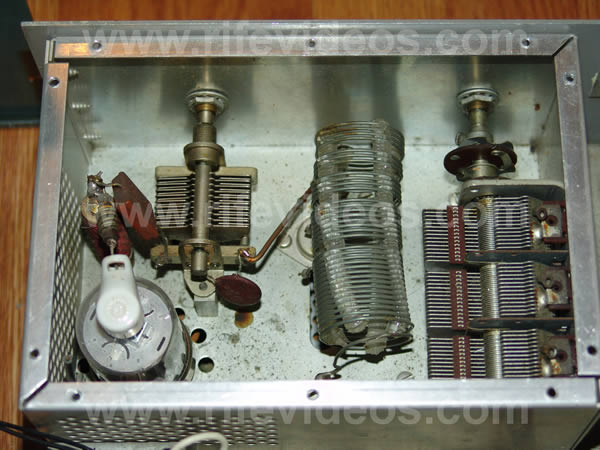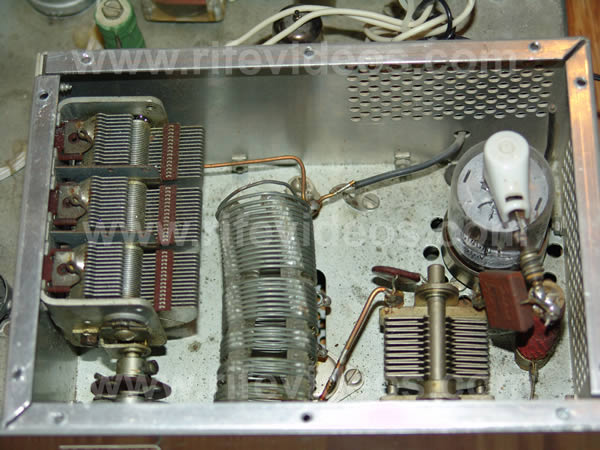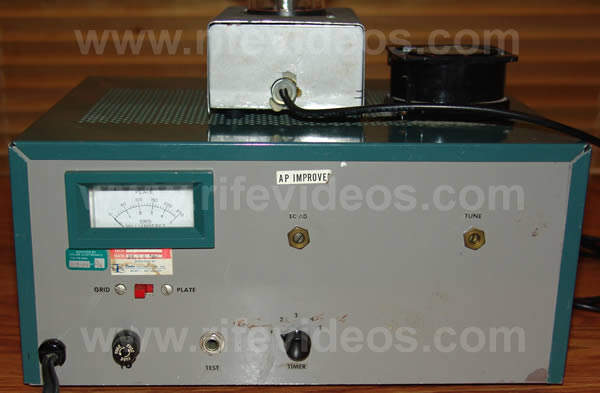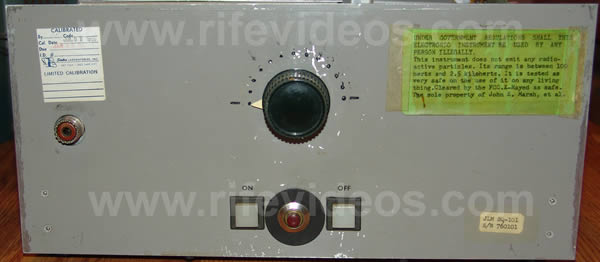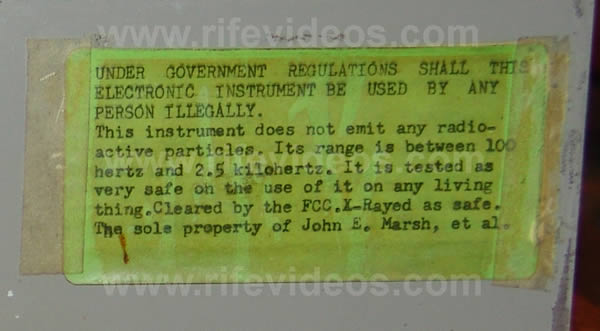| Home | Accessory Kit | Marsh CD Collection | Library | Contact Us |
Chapter #16
John Marsh's 1980's
Ray tube Rife Machine
1) Used a ray tube.
2) RF Carrier frequency was set at 2.2 MHz
3) Used square wave audio frequencies modulated onto a sine wave carrier frequency.
4) Power usage was about 250 watts. Output to the ray tube about 50-watts.This style of ray tube instrument Model JLMSQ-101, which was built in the 1980s, was the last design that John Marsh built before his death. All of his Rife Machines and Rife information were given to his nurse before his death. His equipment and documents were obtained from her in 2012. Since we were able to obtain this instrument we have been able to date it and take better photos of the complete instrument. Some of this information and new photos are shown below and are now included in this report.
John Marsh built two different models of this style of Rife Machine. In the next two photos, shown below, we see the first model of this style of instrument. The instrument was a mix of both old vacuum tube technology and modern solid-state technology. The audio oscillator was a solid-state variable audio oscillator with a digital readout for displaying the frequencies. The frequency range went from about 20 Hertz to 20,000 Hertz. The instrument used the same low square wave audio frequencies that were used in the 1950’s AZ-58 Rife Machine built-in 1953. Those thirteen frequencies were 120, 660, 712, 727, 776, 784, 800, 803, 880, 1552, 1862, 2008, 2128. The RF carrier frequency section was built using old vacuum tube technology. The RF carrier frequency was set at 2,200,000 Hertz. This RF carrier frequency again shows that John Marsh did not understand the harmonic sideband method that Philip Hoyland used in the original Rife Ray #5 or Beam Ray Clinical Rife Machine sold by the 1938-1939 Beam Ray Corporation. His earlier 1971 instrument which was discussed in Chapter 15 of this report used a 4.150 MHz (4,150,000 Hertz) RF carrier frequency. Both of these RF carrier frequencies (2.2 MHz and 4.150 MHz) clearly show that Philip Hoyland's sideband method was not used. What became of this instrument is not known. John Marsh most likely sold it to someone because he was building these for a few people who wanted them.
In the next photo, shown below, we see John Marsh's second style of Rife Machine. This is the same machine shown above in the first photo of this chapter. This machine John Marsh used until his death in 1987. This machine was given to his nurse. We now have this machine and know how it worked. The instrument uses the same low square wave audio frequencies that were used in the 1953 AZ-58 Rife Machine. This instrument was unique because he did not have it built with a variable audio oscillator. Instead, it had a dial that had 13 different positions for the 13 different audio frequencies which he used. John also had this instrument RF section built using old vacuum tube technology. The RF carrier frequency was also set to 2,200,000 Hertz (2.20 MHz). The fact that this instrument is still being used even after about thirty years speaks of its quality of construction.
In the next photo, shown below, we see John Marsh with this instrument in the 1980s shortly before his death.
The ray tube used with this instrument has an interesting design because it was designed to stand up. In the new photo, shown below, you can see an up-close view of this ray tube.
Below is a photo of the inside of the case that held the ray tube. You will notice that the ray tube is darkened. This happens to this type of ray tube because the metal electrodes are on the inside of the ray tube. When the ray tube is lit the metal comes off the electrodes and over time slowly contaminates the gas and the interior of the tube. The metal deposits or coats the inside of the ray tube and then the ray tube becomes less effective. In many cases, the ray tube begins to sputter requiring it to be replaced or cleaned out and re-gassed. The photo of the new ray tube, shown above, is one of the extra ray tubes that John had built for this instrument. Many people no longer use ray tubes with internal electrodes because of this problem. The tubes without internal electrodes last for many years without any need for replacement. Some people have used them for more than 15 years and the ray tubes are still working without any problems.
The photo, shown below, is the underside of the instrument with the bottom removed.
The next picture is a photo of the instrument with the top cover removed.
The next two photos, shown below, are a close up of the RF carrier frequency section showing the RF tank coil and the two variable tuning capacitors for tuning the RF carrier frequency to 2.2 MHz and for tuning the ray tube resonance.
In the next photo, shown below, you can see the two brass-colored nuts with regular screwdriver slots. The one on the left labeled “Load” was for tuning the ray tube and the other on the right which is labeled “Tune” was for tuning the carrier frequency.
The next photo, shown below, is a side view of the instrument showing the electronics for the thirteen square wave audio frequencies.
In the next photo, shown below you can see the tuning dial for each of the thirteen square wave audio frequencies. The dial started with the lowest audio frequency and went to the highest. The audio frequencies went in clockwise order from the first setting to the last setting 120, 660, 712, 727, 776, 784, 800, 803, 880, 1552, 1862, 2008 and 2128.
The next photo, shown below, is of the typed writing that John Marsh had put on the front of this instrument.
The final photo, shown below, is of the machine with the ray tube lit. The ray tube would be a lot brighter if the tube was in new condition.
Chapter Summary: This instrument built by John Marsh used the same frequencies as the 1953 AZ-58. It also worked on the same low audio frequency square wave harmonics method as the AZ-58. The power level was lower than the AZ-58 and his 1970's AZ 58 replica discussed in chapter 15 of this report. This instrument was the last ray tube instrument John Marsh built before his death in 1987.
In chapter 17, we will discuss the "Skin Effect" myth as it pertains to human tissue.

